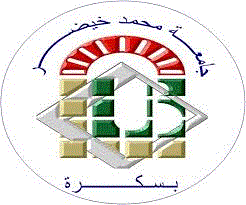| Titre : | Introduction to Mathematical Fire Modeling |
| Auteurs : | Marc L. Janssens, Auteur |
| Type de document : | Monographie imprimée |
| Editeur : | CRC Press, 2000 |
| ISBN/ISSN/EAN : | 978-1-56676-920-4 |
| Format : | 1 vol. (259 p.) / 21 cm |
| Langues: | Anglais |
| Langues originales: | Anglais |
| Résumé : |
Computer simulation proves to be a valuable tool for the analysis and prediction of compartment fires. With the proper understanding and software, fire safety professionals can use modeling tools and methods to find answers to many critical questions relating to the prevention, investigation, and reconstruction of compartment fires. Thoroughly updated and revised, An Introduction to Mathematical Fire Modeling, Second Edition introduces the concepts, software, and techniques of computer-aided mathematical modeling and the software for the analysis and prediction of a variety of compartment fires. Beginning with basic compartment fire theory, the author develops a simple mathematical model that provides an engineering approximation of the time-varying conditions created by fires in an enclosure that may be subject to hot-layer vents. This is the first book focused on the deterministic computer modeling of compartment fires, and the FIRM model presented is the first fire model to be documented, validated, verified, and evaluated according to ASTM guidelines. The text includes detailed information on the use of the QBASIC software provided on an enclosed CD-ROM. |
| Sommaire : |
BASIC COMPARTMENT FIRE THEORY Introduction Approaches to Mathematical Fire Modeling Computer Languages Used for Fire Modeling INTRODUCTION TO MATHEMATICAL COMPARTMENT FIRE MODELING: The Fire Compartment The Fire Flame and Plume The Hot and Cold Gas Layers Heat Release Rate of the Fire Heat Transfer in Enclosure Fires Generic Compartment Zone Fire Model ASET-QB: A SIMPLE ROOM FIRE MODEL Introduction Formulation of the ASET Equations: Layer Interface Height, Hot-Layer Temperature, Outflow of Lower Layer Gases Solution of the Differential Equations The ASET-QB Computer Program: Heat Release Rate, Geometry of the Fire Compartment, Radiative and Total Heat Loss Fractions Comparison Between ASET-QB and SET-B Limitations of ASET-QB: The Plume Model, Hot-Layer Venting, Hot-Layer Species Concentrations, Burning in the Hot Layer, Oxygen Starvation, Heat Loss Fraction, Burning Rates MODIFICATIONS TO ASET-QB Venting of the Hot Layer: Oxygen-Limited Burning Heat Loss Fraction Calculation Heat Release Rate Predictions The Prediction of Flashover The FIRM-QB Model Introduction Fire Problem Modeled by FIRM-QB Technical Description of FIRM-QB FIRM-QB Program Description FIRM-QB Data Libraries FIRM-QB USER'S MANUAL Introduction Technical Documentation Program Description Installing and Operating FIRM-QB Program Considerations Input Data: General Considerations, Specific Considerations for Each Input Variable External Data Files System Control Requirements Output Information Personnel and Program Requirements Sample Problems The FIRM-QB Model as a Design Tool The FIRM-QB Model as a Hazard Analysis Tool Restrictions and Limitations Error Messages EVALUATION OF THE PREDICTIVE CAPABILITY OF FIRM-QB Introduction Predictive Capability of Fire Models: Documentation, Validation, Verification, Evaluation Predictive Capability of FIRM-QB: Documentation, Validation, Verification, Evaluation, Comparison of FIRM-QB Predictions with Experimental Data Conclusions CONCLUSIONS APPENDICES Conversion Factors and Constants Review of Fundamentals of Engineering for Fire Modeling Installing and Running theSoftware QBASIC Programmer's Notes Visual Basic Programs REFERENCES |
Disponibilité (1)
| Cote | Support | Localisation | Statut |
|---|---|---|---|
| PHY/855 | Livre | bibliothèque sciences exactes | Consultable |





